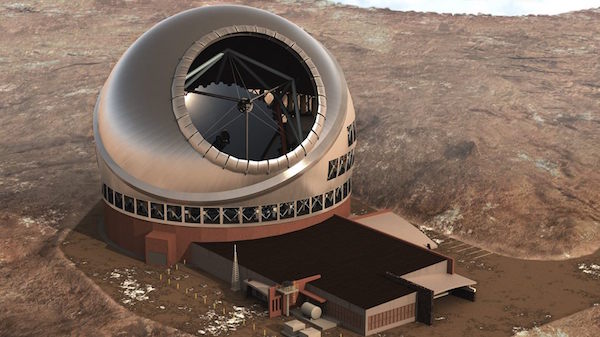The world’s largest ever telescope might be set up in Ladakh. After severe protests in Hawaii against the proposed Thirty Meter Telescope (TMT) project, the US has now started exploring alternate sites for the same, one of which is Hanle in Ladakh.
The TMT project, aimed at studying the universe, was to be established at Mauna Kea in Hawaii. The construction was to start this year, but protests arising from the local population has stalled the process. The protests resulted from a recent Supreme court order that revoked constructional permit on procedural grounds.

Bacham Eswar Reddy, Programme Director stated that the State of Hawaii agencies are working on the permit process by following the procedure prescribed by the court. TMT is consulting with the University of Hawaii and other agencies on further matters. He maintained that Mauna Kea was still the preferred choice, but the importance of this project is so high that even other alternative sites are being considered by the project partners, both in northern and southern hemispheres. The sites being examined for technical and logistical suitability are in Chile, Hanle (Ladakh) among others.
He further added that the on-site civil work may be delayed by a couple years, but work on the telescope and other observatory subsystems is in process across the partnership.
India holds 10 percent partnership in the TMT project, which also has China, Japan, US and Canada onboard. From India, the departments in charge of the project include the ministry of science and technology and department of Atomic Energy.
This project is expected to better employment opportunities for the local people and also help develop the region. TMT being the largest optical and infrared telescope, it will strengthen the local programmes of the nation in this particular field and lead to many significant discoveries, which shall inspire future generations. This project will open doors to the development of state-of-the-art high-end technologies and expertise in the country, a representative of the ministry of Science and Technology said.
The world’s largest ever telescope might be set up in Ladakh. After severe protests in Hawaii against the proposed Thirty Meter Telescope (TMT) project, the US has now started exploring alternate sites for the same, one of which is Hanle in Ladakh.
The TMT project, aimed at studying the universe, was to be established at Mauna Kea in Hawaii. The construction was to start this year, but protests arising from the local population has stalled the process. The protests resulted from a recent Supreme court order that revoked constructional permit on procedural grounds.
Bacham Eswar Reddy, Programme Director stated that the State of Hawaii agencies are working on the permit process by following the procedure prescribed by the court. TMT is consulting with the University of Hawaii and other agencies on further matters. He maintained that Mauna Kea was still the preferred choice, but the importance of this project is so high that even other alternative sites are being considered by the project partners, both in northern and southern hemispheres. The sites being examined for technical and logistical suitability are in Chile, Hanle (Ladakh) among others.
He further added that the on-site civil work may be delayed by a couple years, but work on the telescope and other observatory subsystems is in process across the partnership.
India holds 10 percent partnership in the TMT project, which also has China, Japan, US and Canada onboard. From India, the departments in charge of the project include the ministry of science and technology and department of Atomic Energy.
This project is expected to better employment opportunities for the local people and also help develop the region. TMT being the largest optical and infrared telescope, it will strengthen the local programmes of the nation in this particular field and lead to many significant discoveries, which shall inspire future generations. This project will open doors to the development of state-of-the-art high-end technologies and expertise in the country, a representative of the ministry of Science and Technology said.